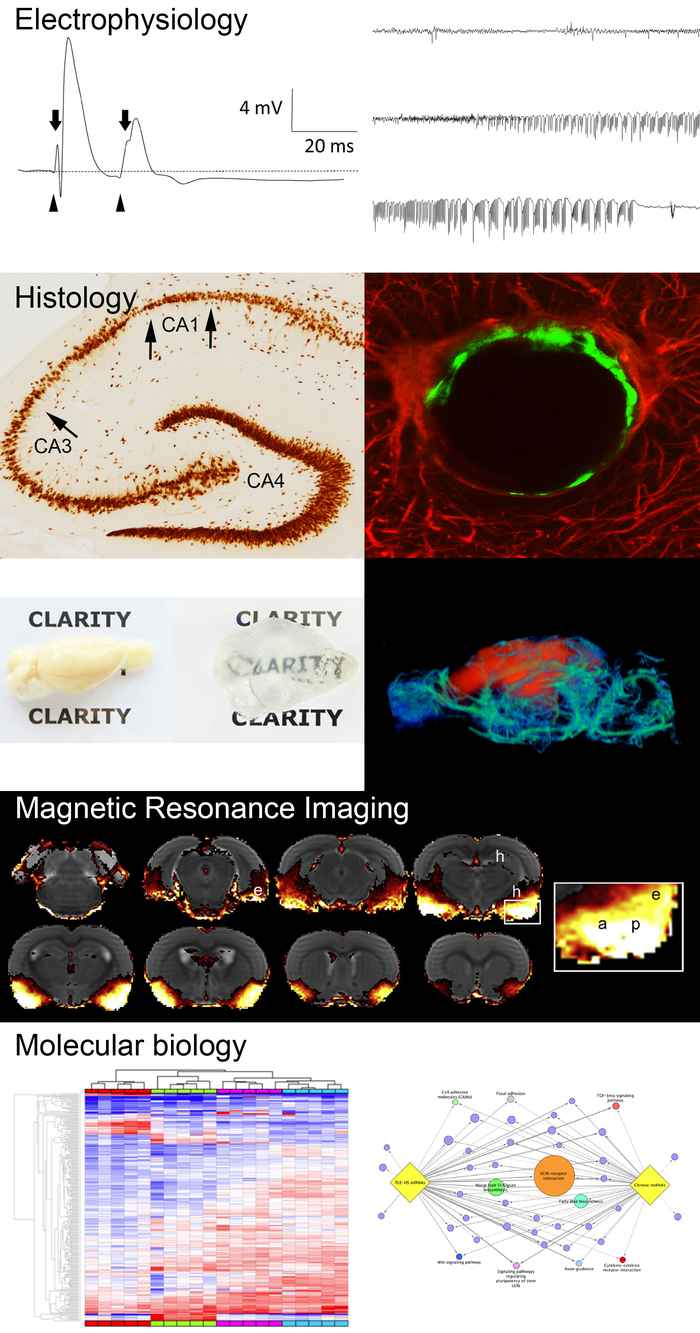Research lines Cellular and Computational Neuroscience
-
Synaptic plasticity & behaviour - Helmut Kessels
Synaptic Plasticity & Behaviour (research line Helmut Kessels)
Memory encoding occurs through the selective strengthening and weakening of synapses within a circuit of neurons. A dominant mechanism for this synaptic plasticity is changing the number of AMPA-type glutamate receptors at the receiving end of the synapse.
In our group we use our knowledge of AMPA-receptor plasticity as a tool to study adaptive behavior in mice. By monitoring AMPA-receptor trafficking we can identify synapses that undergo experience-dependent changes during memory formation. By manipulating AMPA-receptor function we can influence animal behavior.
The study of AMPA-receptor trafficking not only feeds our fundamental knowledge of cognitive function, but also may learn us more about cognitive dysfunction. Alzheimer’s disease patients have difficulties acquiring new memories. How synaptic plasticity is corrupted in mouse models for Alzheimer’s disease is studied in our group.
-
Anatomical and functional network properties - Natalie Cappaert
Furthermore, the group focusses on the anatomical and functional network properties (research line Natalie Cappaert) of the hippocampus, the parahippocampal region and the amygdala at 3 levels (connectomics, population and cellular level).
Combinations of in vitro techniques like voltage sensitive dye imaging and patch clamping are applied to study the functional connectivity between and within brain regions. In a current project, for example, the micro-circuitry of the perirhinal and entorhinal cortex is characterized, in particular to understand the functioning of the perirhinal gate, by investigating the relations between the participating excitatory and inhibitory neurons and their intercommunication. To better understand the network properties, the anatomical connectivity of the hippocampus and parahippocampal region are studied by developing an interactive connectome of the three-dimensional organization of the projection patterns between and within the hippocampal formation, the parahippocampal region and the retrosplenial cortex. The functional properties of this structural connectome are investigated with a graph analysis. In the current project the amygdalar connections are mapped and computational models are developed to investigate the modulatory role of the amygdala onto the hippocampus and the parahippocampal region, during learning and memory
-
Epilepsy - Jan Gorter and Erwin van Vliet

Another main focus is on epilepsy. Almost 65 million people suffer from epilepsy, making it one of the most common neurological diseases worldwide. About one third of all epilepsy patients cannot be adequately treated with currently available anti-epileptic drugs.
One of the major challenges in epilepsy research is the identification of novel therapeutic targets. Moreover, there is an urgent need for reliable biomarkers that can predict whether epilepsy will develop, e.g. after brain trauma or other severe brain insult. Biomarkers could substantially improve the management of people with epilepsy and could lead to prevention in the right person at the right time.
In our studies we use neurophysiological (EEG, field potentials in vivo and intracellular recordings in (cultured) brain slices), anatomical (tracing, immuno- and histochemistry), molecular (in situ hybridization, quantitative-PCR, western blot, microarrays, next generation sequencing) and imaging (magnetic resonance imaging) techniques to get insight in the processes that ultimately lead to epilepsy. Using in vitro and in vivo preclinical models and resected brain tissue from patients, we seek to unravel the mechanisms of drug-resistance and development of epilepsy (=epileptogenesis), to find biomarkers and to apply a treatment that could prevent epilepsy. We presently focus on treatments aimed at the blood-brain barrier, neuroinflammation and the cannabinoid system.
-
Endocannabinoid system – Pascal Chameau
Pascal Chameau investigates the endocannabinoid (eCB) system, a neuronal signaling system that comprises endogenous (lipid) ligands, synthesizing and metabolizing enzymes and cannabinoid receptors (CB1R and CB2R). It is involved in the mature brain, in modulating neuronal excitability and the transfer of information between neurons (via the inhibition of excitatory and inhibitory neurotransmitter release). In addition, the eCB system is a key regulatory signaling system of brain development. It is one of the first neuromodulator systems present in the developing brain and involved in neurogenesis, migration and specification of cortical neurons.
Our research focusses on understanding the role of the eCB system in cortical development and the consequences of exogenous cannabinoid exposure for cortical organization leading to cognitive deficits in adults. We aim at determining how the eCB system shapes cortical connectivity and excitability and how its alterations at early stages of cortical development affect cortical output and higher-order cognitive functions. In addition, we aim to determine whether alterations of the eCB systems can lead to neuronal migration defects which are associated with epilepsy.
In the mature brain, the eCB system is an interesting candidate for controlling (hyper)excitable neuronal (network) activity, for instance in cases of pathologies like epilepsy. Our previous research has shown that CB2R activation can reduce cellular excitability. We therefore also focus on the potential role of CB2 receptor activation in terminating pharmaco-resistant epileptic activity using both in vitro and in vivo electrophysiology in models for epilepsy.
-
Contribution of brain areas to cognition - Marlies Oostland
Marlies Oostland studies the contribution of the cerebellum and connected forebrain areas to cognition, using play as naturalistic behaviour to examine the development of neuronal dynamics for the formation of internal models and gating of sensory events. To do so, we monitor and perturb activity in cerebellar networks during playful behaviours, such as tickling and social play-fighting in rodents.